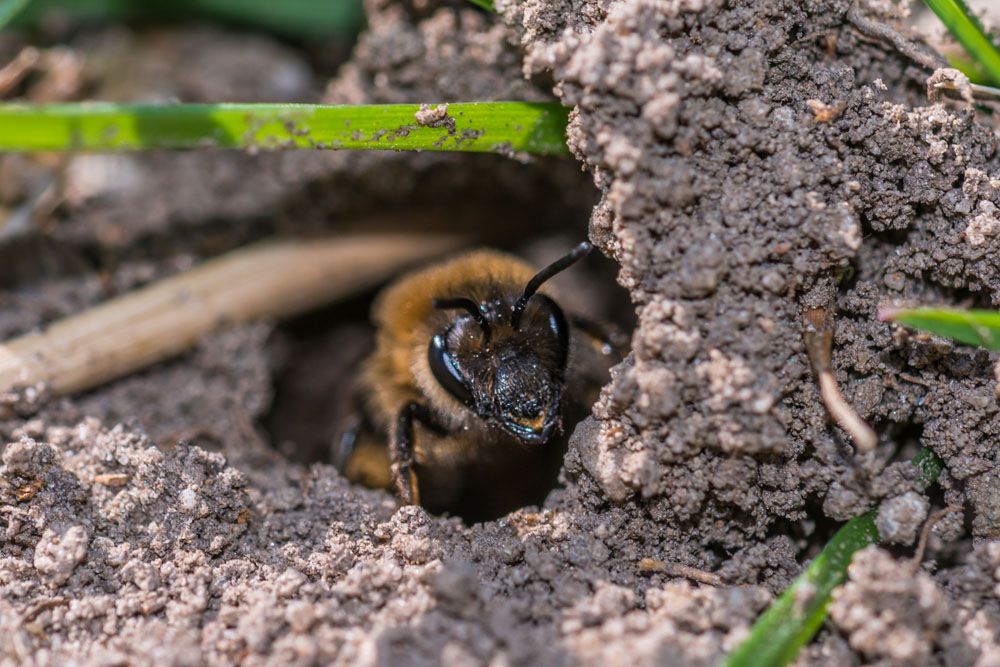
Ground-Nesting Bees
Ground-Nesting Bees
Common Name: Native bees, solitary bees, wild bees, mining bees, leafcutter bees, digger bees, sweat bees
Appearance: Ground nesting bees comprise almost two-thirds of all the bees population. Usually, all ground-nesting species are solitary bees which means they do not live in colonies. They are small, fuzzy in appearance, and maybe black or metallic in color.
Host Plants or Food: Most of them feed on nectar and pollen from flowers. A few ground-nesting species also cut fragments of leaves and flowers for their nest.
Territory: Throughout North America, Europe, and Asia
Mode of Damage: Since they consist of a large variety of bees, they may be beneficial garden insects, leaf chewers, flower feeders, or sapsuckers. One attribute common in all ground-nesting bees is efficient pollination.
Habits and Life History:
Ground nesting bees are generally found in sunny, sandy areas with well-drained soil and slight greenery.
The female makes a burrow in the ground after mating and lays eggs and pollen in the burrow. The burrow may have several cells, one for each egg.
After the larvae hatch from the eggs, it feeds on the pollen and becomes an adult. The adult creeps out of the burrow and starts the cycle again.
They only have one generation per year.
The adult bees stay active for a few weeks, after which they again go into hibernation or aestivation.
